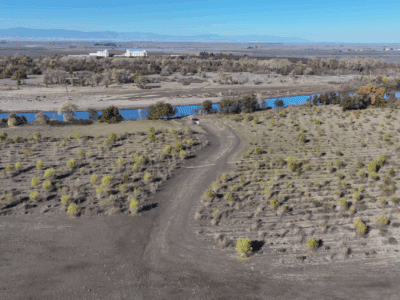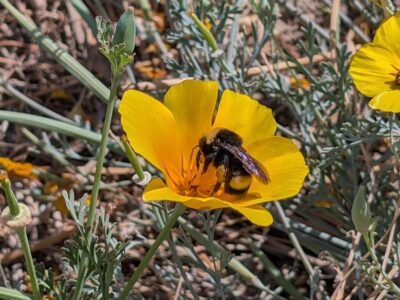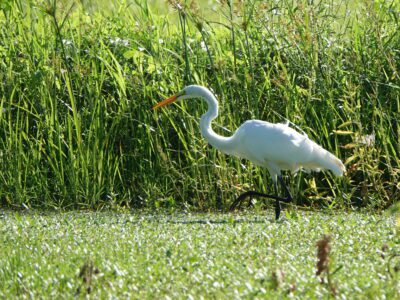Have you ever wanted to go back in time to see what the Central Valley looked like 1,000 years ago?
You wouldn’t find the familiar fields of irrigated farmland or tidy rows of nut orchards up and down Interstate 5. You might be shocked at how different the landscape would look—especially the free-flowing rivers and waterways weaving through the valley.
“One of the things I most want to do in this life is visit pre-settlement California, to see what it was like,” confessed River Partners Senior Restoration Biologist Mike Davis.
While we can’t go back in time, Davis may have found the next best option: visiting the Great Valley Grasslands State Park between Highway 99 and Interstate 5, an often overlooked stretch of river in the middle of the San Joaquin Valley.
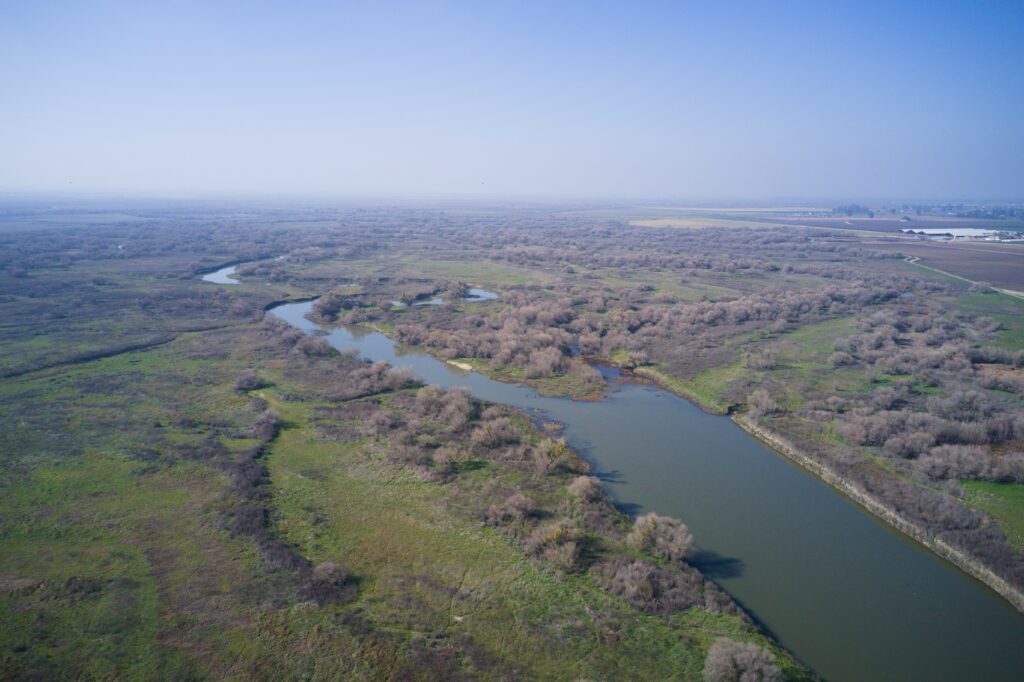
“Great Valley Grasslands isn’t unaltered, because we’ve affected the valley a lot in the last 100 years. But it’s one of the best examples we’ve got of what it used to look like. It’s like a time machine,” said Davis.
Step back in time (almost)
The 2,826-acre Great Valley Grasslands State Park offers visitors a glimpse of what the San Joaquin Valley looked like before it was transformed into an agricultural powerhouse. The park is a unique example of native grasslands, wetlands, and riverside forests that were once found throughout the valley floor, but now only exist in a few places.
The park provides important habitat for several rare plants and animals, including native California bunchgrass alkali sacaton, endangered Delta button celery, and the San Joaquin tadpole shrimp, an endangered tadpole shrimp endemic to California. It also provides habitat to endangered fall and spring-run Chinook salmon and the Swainson’s hawk.
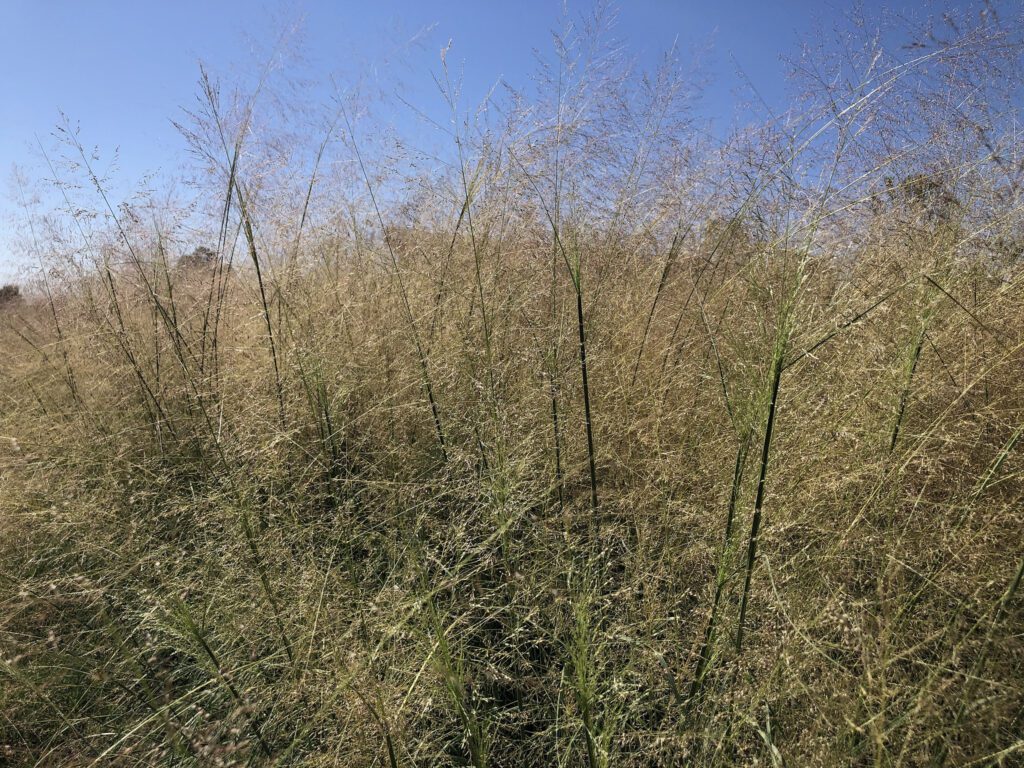
“This is one of the last, best preserved riparian areas within the Central Valley,” noted Kristan Culbert, American Rivers Associate Director of California River Conservation. The park is part of the Grasslands Ecological Area (GEA), which at 160,000 acres is the largest contiguous habitat mosaic of wetlands remaining in California.
Davis marveled, “It’s never been plowed, which is very unique for the valley.”
However, a significant area of the grassy floodplain has been severed from the San Joaquin River by a levee, erected by cattle ranchers before the land was transferred to California State Parks and Recreation. Although cattle no longer graze the area, without natural floodplain hydrology, invasive plants took hold and threaten the sensitive habitat.
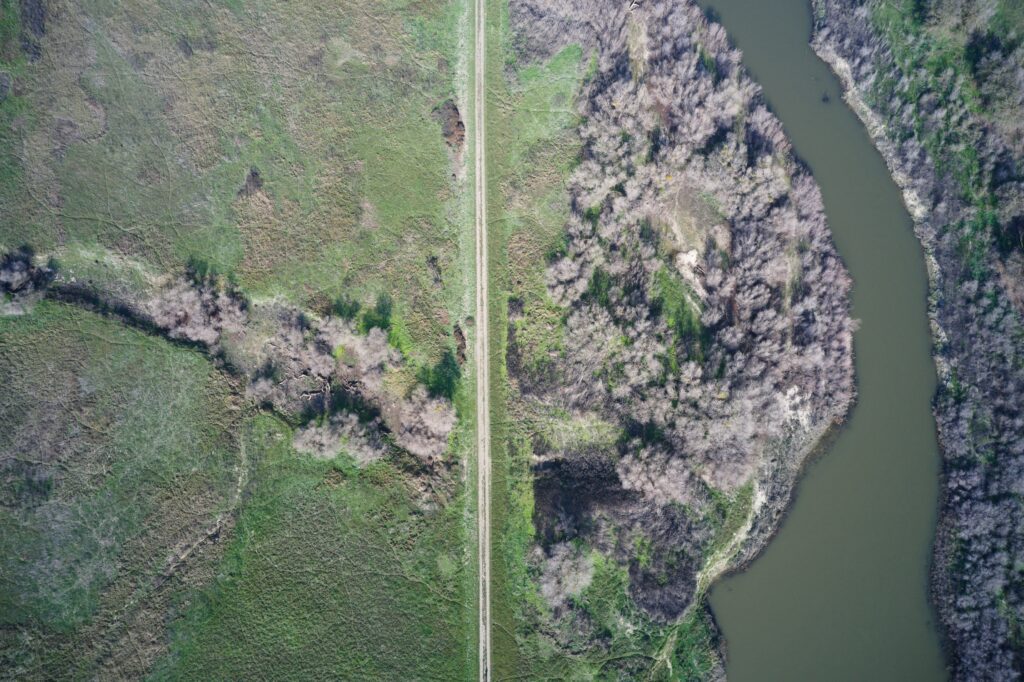
The levee also creates a narrow pinch-point on the San Joaquin River, leading to oversaturation of adjacent lands. This degrades riparian and river channel habitat, resulting in higher water temperatures for endangered fish. Not to mention, the levee is expensive to maintain for the Lower San Joaquin Levee District.
“It’s a good opportunity for ecological restoration because no one was going to come to the defense of this levee,” says Davis. “And behind it, you have hundreds of acres of historical floodplain along that San Joaquin River. It’s a straightforward opportunity to breach.”
River-driven recovery
Now, restoration efforts are underway, led by American Rivers in partnership with a coalition of local Tribes and project partners, including California State Parks, River Partners, Ducks Unlimited, the U.S. Fish and Wildlife Service, California Department of Water Resources, U.S. Bureau of Reclamation, California Department of Fish and Wildlife, FlowWest, and Central Valley Irrigation District.
Together, they’ve advanced the project through assessment, funding, and permitting hurdles over more than 10 years, including decommissioning the levee. Only one other restoration project in California has successfully removed a levee from a levee authority’s maintenance responsibility.
A groundbreaking ceremony took place in December, marking the official start of construction, or rather, deconstruction.
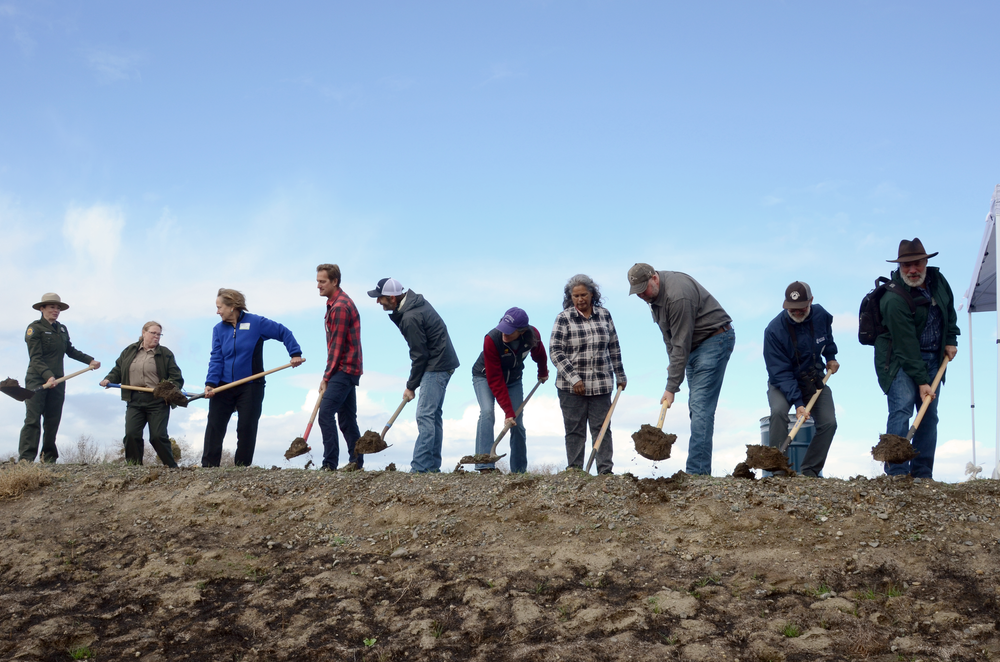
“Now, instead of maintaining the levee, you have an option to decommission the levee,” says Heather Reith, Natural Resources Manager of the Central Valley District with California State Parks. “So, we’re not going to do anything to it. We’re going to breach it and let it go away.”
The first phase of restoration is to notch and degrade the levee, letting the river erode the rest naturally, restoring connectivity to the river that had been put on halt for decades. During high flood events, the river will be allowed to breach its banks, overtop the levee, and flow into the notched areas, and eat away at the levee as it erodes. When the river receives lots of precipitation and overtops its channels, it will flood in areas where it hasn’t flooded since the levee was created.
During this phase, River Partners will also plant and seed native grasses, shrubs, and trees to assist the regeneration of the floodplain.
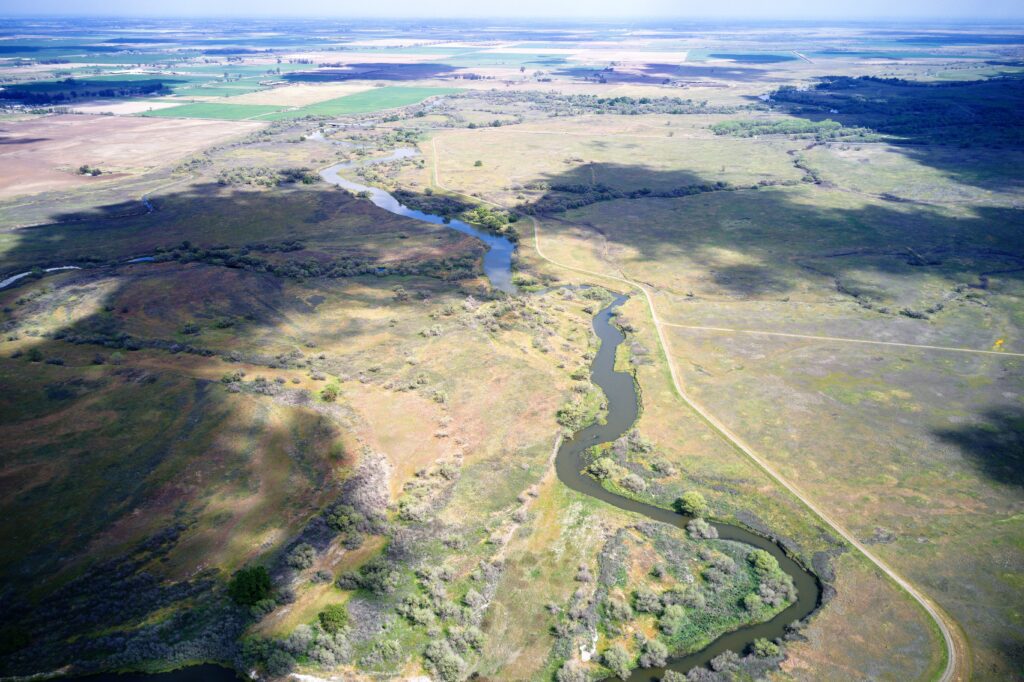
This restored natural hydrology will benefit not only aquatic species that live in the water by creating over 200 acres of new habitat for baby salmon, but will also benefit plants native to the grassland ecosystem who evolved with a river floodplain hydrology.
The restoration follows a philosophy of “river-driven recovery”, said Dr. Ann Willis, American Rivers California Regional Director, which means that it is guided by the river itself, and not an engineer’s plan. The river is expected to take a more complex, more resilient, and more successful approach to regeneration.
Restoring the natural regime of water—and fire
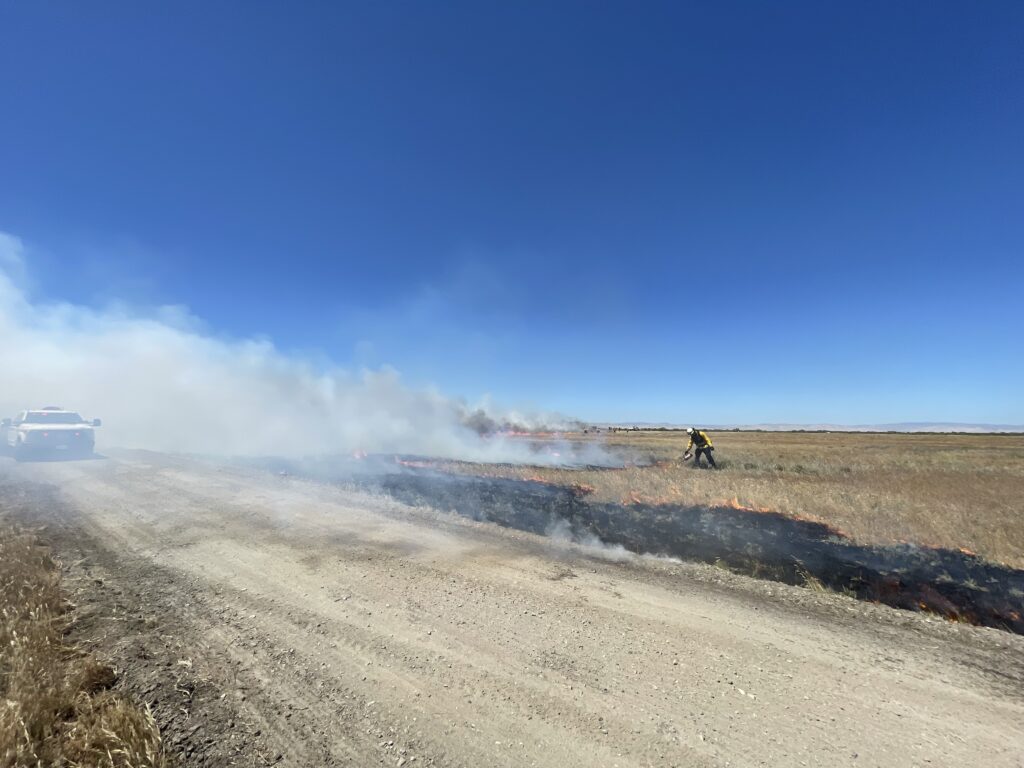
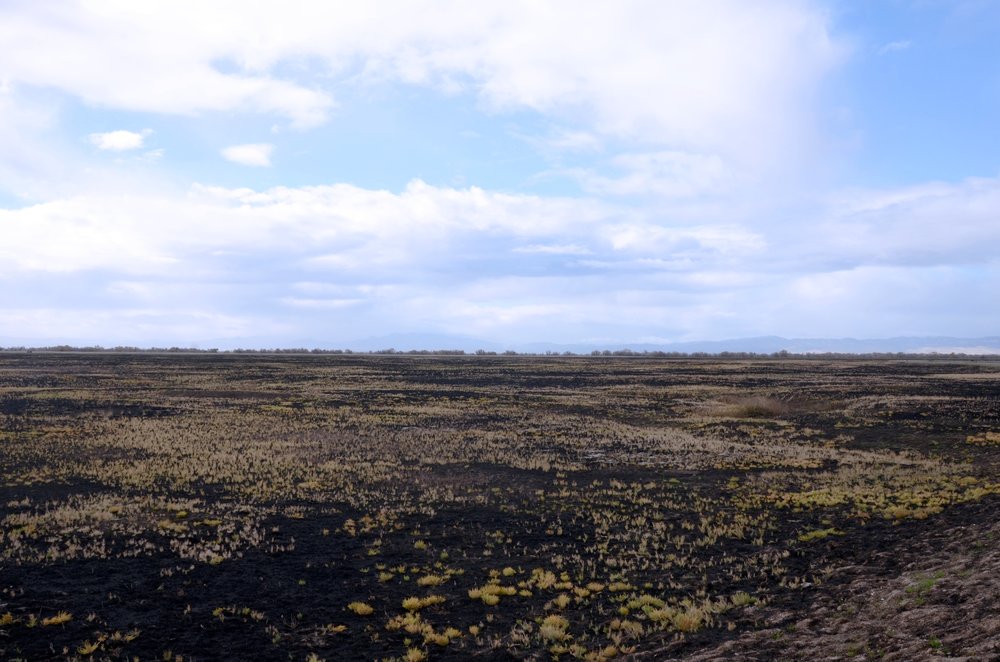
In addition to restoring the natural hydrology of the floodplain, California State Parks and partners are conducting prescribed burns to bring back the health of the grasslands. In June 2022, a 222-acre area was burned in cooperation with U.S. Fish and Wildlife Service, Amah Matsun Band fire crew, and Northern Valley Yokuts.
California State Parks Central Valley District Tribal Liaison Lee Eal stated, “We are working closely with tribal communities, including the Northern Valley Yokuts and the Amah Mutsun Band, to steward their traditional lands.”
Indigenous Californian peoples have traditionally burned grasslands at regular intervals. However, after the arrival of Europeans and settlers, intentional fires were banned. The primary objectives of the burn at the Great Valley Grasslands State Park were to reduce hazardous amounts of fuel accumulations, improve wildlife habitat, control invasive plant populations, and support the larger floodplain restoration efforts.
According to Reith, “There’s a thick accumulation of thatch at the Great Valley Grasslands State Park. We tried to do some planting, and we can’t get the seed through all the thatch.”
After the burn, native plants have been reinvigorated.
Restoring fire to the land is a critical step to revitalizing the health of California’s ecosystems. Fires help clear old plant matter and stimulate growth, which benefit many animals that rely on the grasslands for habitat. The reintroduction of fire represents not only a healing of the ecosystem, but in many cases, revival of traditional resource management techniques that have been practiced by Indigenous peoples in California for generations.
The next hurdle: restoring access
While restoration efforts at the Great Valley Grasslands State Park are making major strides in revitalizing the natural ecosystem, there is still a significant challenge to overcome: accessibility.
As it stands, the park’s main points of access are on a highway, which means visitors must have access to a car. Furthermore, there is no public transit to the park, and there is a lack of signage, making it difficult to locate the entrance. For many nearby communities, which are predominantly Spanish, Hmong, or Punjabi speaking, the language barrier and lack of accessible transportation make it difficult to visit the park.
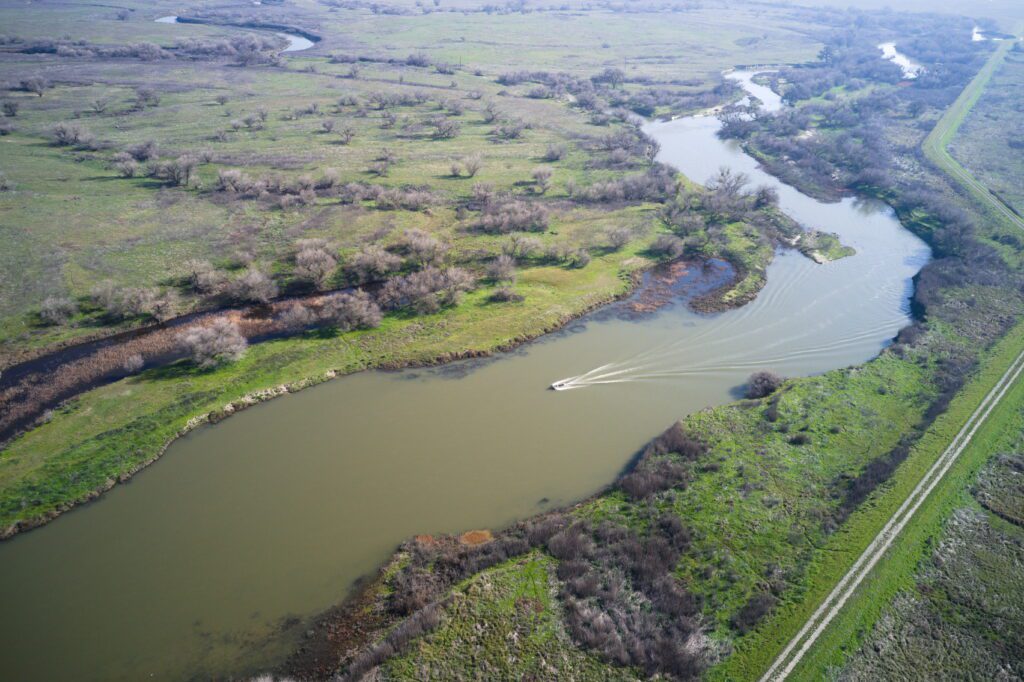
So, even though the park is one of the largest, best-preserved natural areas right in the middle of one of the most park-starved regions in California—it’s not accessible. Many nearby communities suffer from nature deprivation, defined as lack of proximity and access to open space such as parks, rivers, and conserved areas.
“Nature deprivation, when combined with the socioeconomic status of a given community, is a strong indicator of increased vulnerability to climate change impacts, such as wildfire and flooding,” says Culbert.
Restoring access at Great Valley Grasslands is of particular importance to her. “We’re thinking about people, the environment, and the river. There’s a critical need for recreation in this area.”
So far, engagement with several community organizations, including Latino Outdoors, Cultiva La Salud, and others have been underway to provide input on the design of public access improvements to the park.
The restoration efforts will provide new opportunities for visitors to connect with the natural landscape of the valley. By creating a more dynamic river channel and increasing the diversity of habitats in the park, visitors will be able to witness the changes firsthand and explore the restored wetlands, vernal pools, and riparian habitats.
“It’s like walking through a living rainbow,” says Culbert, speaking about the networks of vernal pools. “We want to make sure people can see that while protecting these fragile pools.”
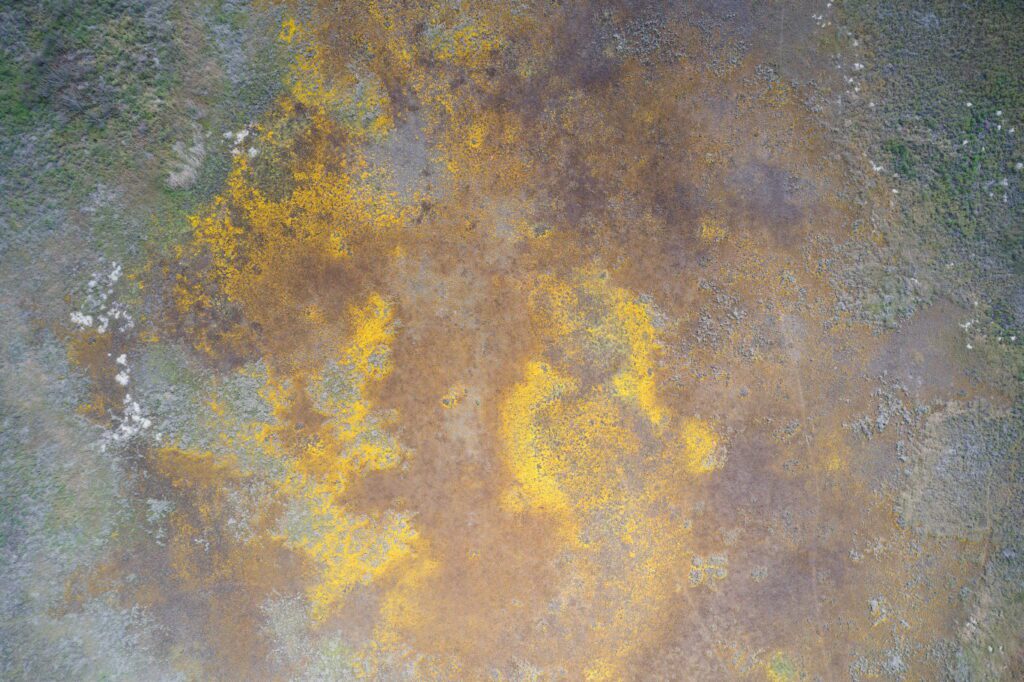
And, as Reith suggests, “If the youth can be taught to love this place, they may become the next resource managers, continuing the effort to conserve California’s largest remaining wetlands.
A stronghold for San Joaquin Valley restoration
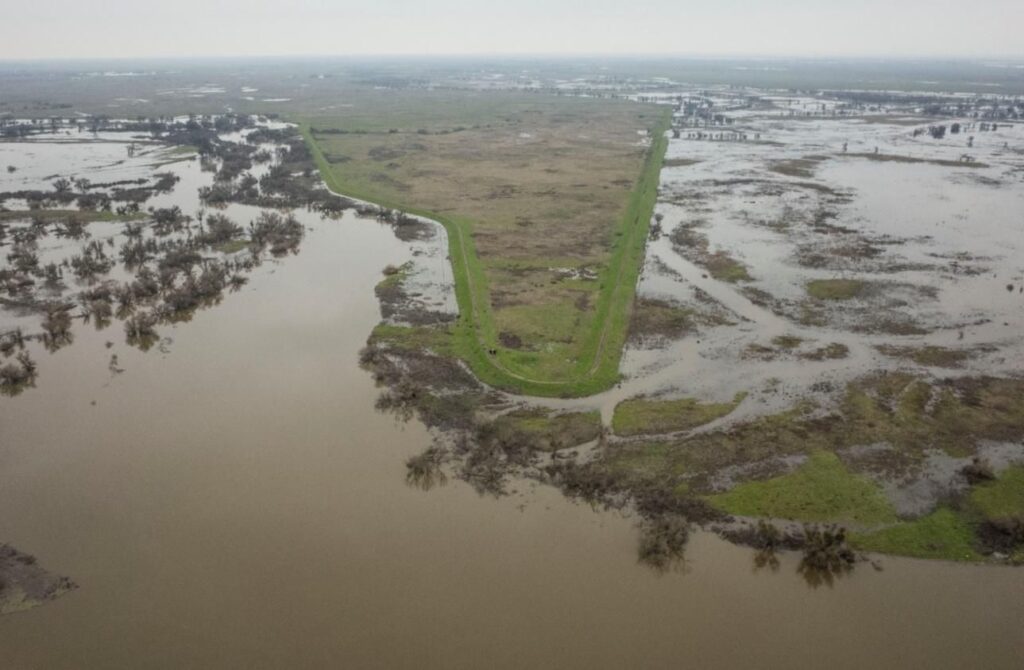
As we strive to restore California riverways to improve our environment and communities, it’s crucial to view the work at Great Valley Grasslands in the broader context of the puzzle we’re solving.
“The restoration efforts at Great Valley Grasslands epitomize the intersection of knowledge and respect for the power of the river, and nature itself, with explicit acknowledgement of the historically disenfranchised communities,” noted Willis.
We cannot assume the natural areas of the Central and San Joaquin valleys will still exist in 100 years. So, while restoring highly-degraded areas is a top priority for River Partners, we must also protect strongholds like Great Valley Grasslands with the best remaining habitat. These strongholds serve as the foundation for further progress, empowering us to do even more.
“No victory is permanent,” reminds Willis. “Every victory is the effort of people day by day working to protect it.”


